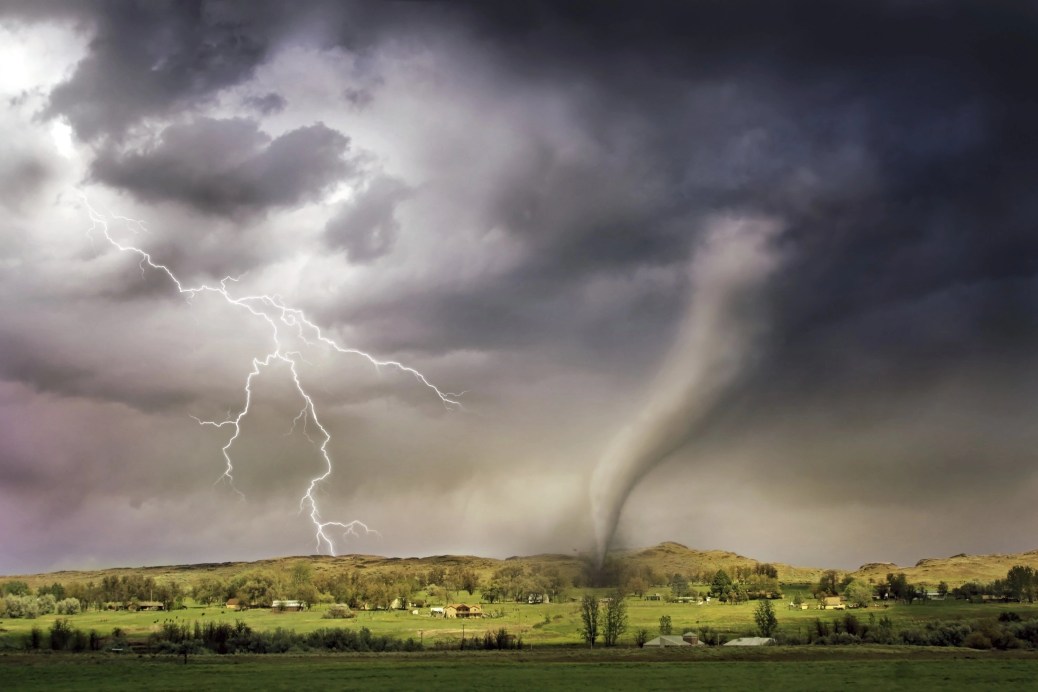How do you know a tornado is coming?
When it comes to severe weather events, tornadoes are among the most destructive and dangerous. These violent storms can devastate communities and cause significant loss of life and property. Therefore, it is crucial to be able to recognize the signs that a tornado is approaching in order to take appropriate action and stay safe.
**Answer:**
To know when a tornado is coming, you need to pay attention to various warning signs and stay informed through reliable sources like weather reports. Some key indicators that a tornado may be imminent include changes in the weather, strange cloud formations, and the presence of a rotating funnel cloud. It is also important to understand the difference between a tornado watch and a tornado warning and be familiar with community warning systems.
Now that we have the answer, let’s delve deeper into each of these points to gain a better understanding of how to recognize the signs of an approaching tornado.
Changes in the weather
Tornadoes are usually associated with strong thunderstorms, so it’s crucial to keep an eye on the weather conditions around you. Look out for sudden changes such as a darkening sky or a greenish tint to the clouds. The atmosphere might feel heavy and humid, and there may be an unusual stillness in the air just before a tornado hits. The temperature may also drop significantly, so if you notice a sudden and noticeable decrease in temperature, it could be an indication that a tornado is approaching.
Strange cloud formations
Clouds play a significant role in tornado formation, so monitoring the sky for unusual cloud formations can help you anticipate a tornado’s arrival. Keep an eye out for cumulonimbus clouds, which are large and tall thunderstorm clouds. Tornadoes often develop within these clouds, so spotting them can be a warning sign. Look for wall clouds, which are large, lowering clouds that may rotate. They can appear dark and greenish and are often found beneath a thunderstorm. If you observe a wall cloud, especially if it is rotating, it is a strong indication that a tornado may be imminent.
The presence of a rotating funnel cloud
The most recognizable sign of an approaching tornado is a funnel cloud. A funnel cloud is a rotating column of air that extends from a thunderstorm cloud towards the ground. It may appear as a large cone-shaped cloud or a slender rope-like cloud. Funnel clouds can be difficult to spot, especially if they are not in close proximity, but they are a clear indication that a tornado is forming. If you see a funnel cloud, take immediate action to seek shelter.
Tornado watch vs. tornado warning
Understanding the difference between a tornado watch and a tornado warning is crucial. A tornado watch means that conditions are favorable for the development of tornadoes in and around the watch area. It does not mean that a tornado has been spotted, but rather that the ingredients for tornado formation are present. During a tornado watch, stay alert and be prepared to take action if necessary.
On the other hand, a tornado warning is issued when a tornado has been detected or visually spotted by storm spotters or radar. When a tornado warning is issued for your area, it means that you should take immediate action to protect yourself. Seek shelter in a basement, storm cellar, or the lowest level of your home away from windows and exterior walls. If you are outside, find a low-lying area and protect your head.
Community warning systems
Most communities have warning systems in place to alert residents of severe weather events, including tornadoes. These systems often include tornado sirens, which are loud outdoor warning devices that emit a distinctive wailing sound. Familiarize yourself with the warning system in your area and know what the different siren sounds mean. Additionally, sign up for local emergency notification systems or download weather apps that provide real-time alerts and updates.
By paying attention to changes in the weather, observing cloud formations, and understanding the different types of warnings, you can increase your chances of knowing when a tornado is coming. Remember, it is important to stay informed through reliable sources and have a plan in place to protect yourself and your loved ones.
Frequently Asked Questions
Q: Can tornadoes occur at night?
A: Yes, tornadoes can occur at any time, including at night. In fact, nighttime tornadoes can be particularly dangerous because they are often harder to see and track. It is important to have a reliable way to receive weather alerts while you sleep, such as a weather radio or a smartphone app.
Q: Can you outrun a tornado?
A: It is not recommended to try to outrun a tornado in a vehicle. Tornadoes can move fast, and they can change direction and intensity suddenly. It is safer to seek shelter in a sturdy building or underground if possible. If you are caught outside and cannot reach a safe location, find a low-lying area and protect your head.
Q: How long does a tornado typically last?
A: The average lifespan of a tornado is about 10 minutes, but they can range from a few seconds to more than an hour. The path and intensity of a tornado can vary, so it is important to take immediate action when a tornado warning is issued.
Final Thoughts
Knowing the signs of an approaching tornado and understanding how to react can make a significant difference in your safety during a severe weather event. By staying informed, being prepared, and having a plan in place, you can increase your chances of staying safe when a tornado is coming. Remember to listen to local authorities and follow their instructions, and always prioritize your safety and the safety of those around you.
